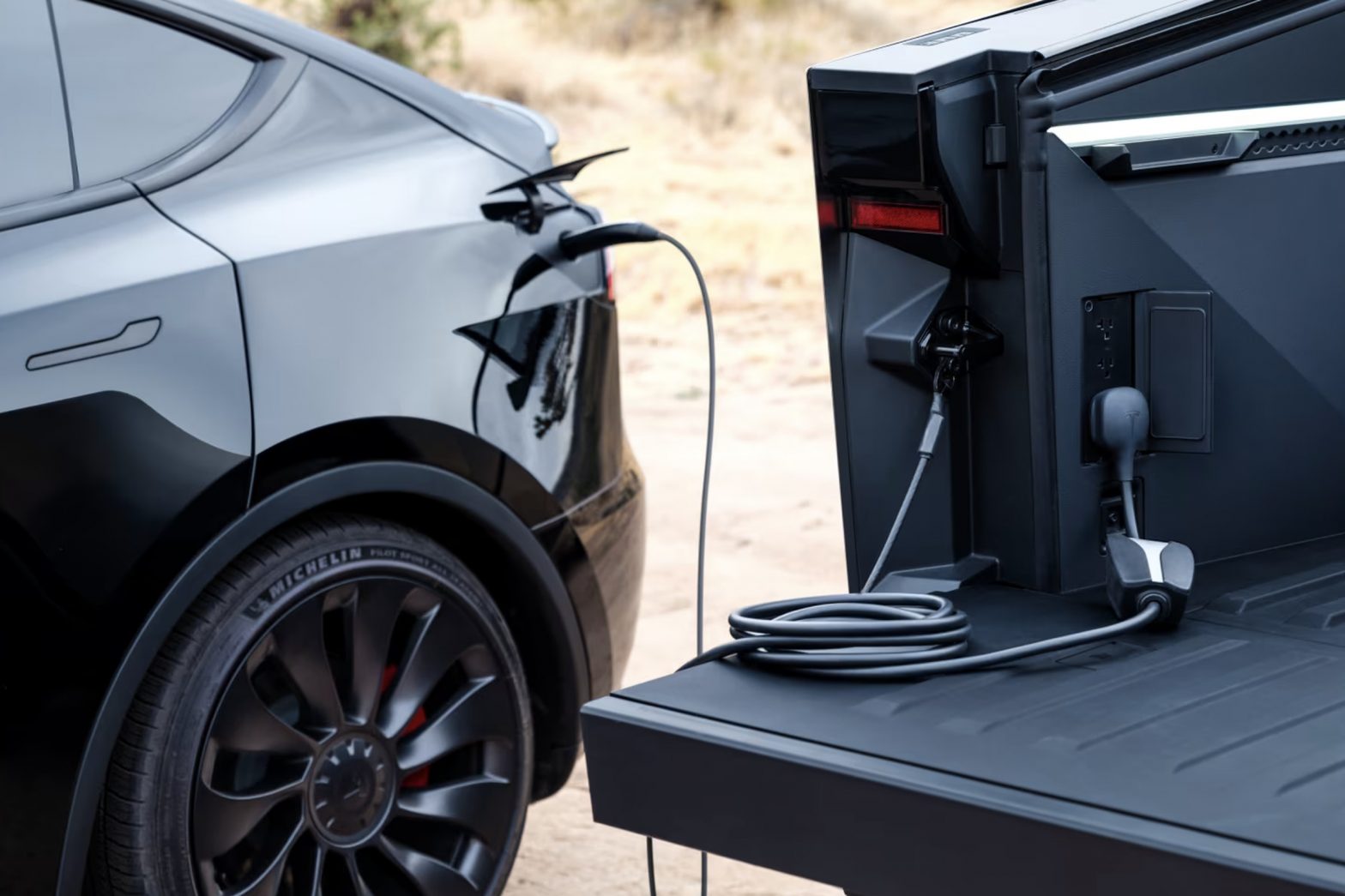/
The EV maker finally jumps on the vehicle-to-load bandwagon.
Share this story
:format(webp)/cdn.vox-cdn.com/uploads/chorus_asset/file/25123625/Screen_Shot_2023_11_30_at_4.17.14_PM.png)
Tesla announced a new “Powershare” vehicle-to-load charging capability, only available on the new Cybertruck.
The feature will allow Cybertruck owners to power their camping equipment, power tools, or even their entire home during a blackout, just by using their electric truck as a mobile generator. The truck also features a 240-volt outlet in the rear bed that can be used to charge other EVs. An image on Tesla’s website shows the Cybertruck charging a Model Y.
The Cybertruck can put out as much as 11.5kW, which is more than the Ford F-150 Lightning’s 9.6kW of onboard power or the GMC Sierra Denali EV’s 10.2kW.
:format(webp)/cdn.vox-cdn.com/uploads/chorus_asset/file/25123669/Screen_Shot_2023_11_30_at_4.27.44_PM.png)
:format(webp)/cdn.vox-cdn.com/uploads/chorus_asset/file/25123670/Screen_Shot_2023_11_30_at_4.27.56_PM.png)
Tesla has been talking about manufacturing vehicles with bidirectional charging capabilities for several years now, first teasing the feature at its Battery Day event in 2020. Since then, many of its competitors have adopted the feature for their EVs, including Ford, GM, Hyundai, Kia, and others.
Tesla CEO Elon Musk seemed to pour cold water on the idea earlier this year, complaining that most people wouldn’t want bidirectional charging because all their lights would go out when they unplugged their car.
Bidirectional charging works exactly like it sounds: with unidirectional (one-way) EV chargers, electricity flows from the electric grid into the electric vehicle; with bidirectional (two-way) EV chargers, electricity can flow both ways.
The idea is to use bidirectional charging equipment to push and pull energy from electric vehicles at any given time. In essence, it treats high-capacity lithium-ion batteries not only as tools to power EVs but also as backup storage cells to charge other electric devices, an entire home, or even to send power to the electrical grid for possible energy savings.
Tesla is also offering ways to control bidirectional charging through the company’s mobile app. Customers can monitor the charging process, adjust preferences, and review energy usage and other data in real time.
Customers who want to take advantage of the Powershare feature in their homes will need a Tesla Powerwall (of course) and a Wall Connector for the most seamless connection.
